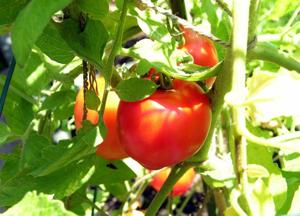
When it comes to gardening this time of year, what we do and when we do it depends on how much we are willing to gamble. That’s because from late February to late March, we are in a transitional time. And the weather during the transition is unpredictable.
It’s particularly fickle when it comes to cold temperatures. By the end of February, we are well past the average last frost date in our area. But the possibility of freezes is not yet over. Still, gardeners anxious for an early harvest of warm-season vegetables (like tomatoes, peppers, beans and cucumbers) will often take a chance and plant these tender plants in mid to late February.
By the middle of March, the chances of even a light freeze (temperatures around 30) in the south shore New Orleans area is very low. So mid-March is considered the frost-free date. At that time we plant warm-season vegetables and bedding plants with more confidence. North shore gardeners would wait until about a week later and plant in late March.
This year it looked as if the early planters had won their roll of the dice. From mid-February until last weekend the weather was unusually warm, with daytime highs regularly in the 80s and cool mild nights. Lots of gardeners already have tomato plants two feet tall and producing fruit.
But, as we experienced this week, late cold snaps can and do occur (on rare occasions even in the first week of April). But they are certainly not typical, and should not change our future planting schedules.
On the south shore, temperatures below 40 degrees may cause some chilling injury to warm-season vegetables and bedding plants. Damage, if seen, is likely to be minor, and plants will recover. New growth on trees and tropicals should be fine.
On the north shore and regions outside the area south of Lake Pontchartrain, where temperatures may have briefly dipped to freezing, damage to plants not covered will be more noticeable. It’s heartbreaking and means the loss of the money, time and effort that was put into cold-damaged plantings.
But the good news is that if you have to replant new warm-season vegetables or bedding plants, this is an excellent time. If you replant in the next few weeks, you can expect what you plant will produce lots of vegetables (like the popular tomato) and beautiful flowers from bedding plants through the summer.
In the future, don’t let this unusually late freeze make you gun-shy about planting tender plants in mid-March. It is better to garden based on what temperatures we typically experience this time of the year and not based on the exceptions.
On the move
By late March, it’s time to think about moving your indoor plants outside for the summer if you plan to do so. Moving houseplants outside can be a little tricky because the plants become acclimated to lower light conditions while indoors. For that reason, initially move all houseplants to shady locations outdoors where they receive no direct sunlight.
Plants that like low light conditions will stay in those locations all summer. Ones that prefer more light can gradually be introduced to some direct sun over the next couple of weeks. Eventually sun-loving plants, like bougainvillea, hibiscus, plumeria, tibouchina, cactuses and some orchids, can be placed in locations that get six hours of direct sun or more. Be careful; even sun-loving houseplants may burn if put in a sunny location as soon as they come out of the house.
Once outside, most houseplants would enjoy a good rinsing off with the garden hose. Months of indoor dust can be cleaned away by doing this.
Room to grow
Now is also a good time to begin to look at which plants might need to be repotted. How do you tell if a plant needs to be repotted? This is done when the plant fills up the container with roots — a condition called being root bound or pot bound. Look for a solid mass of roots on the soil surface and/or roots coming out of the drainage hole. Lay the pot on its side and gently slide the rootball out of the pot to check the roots. If you see a solid mass of roots, it’s time to repot.

Leave a Reply